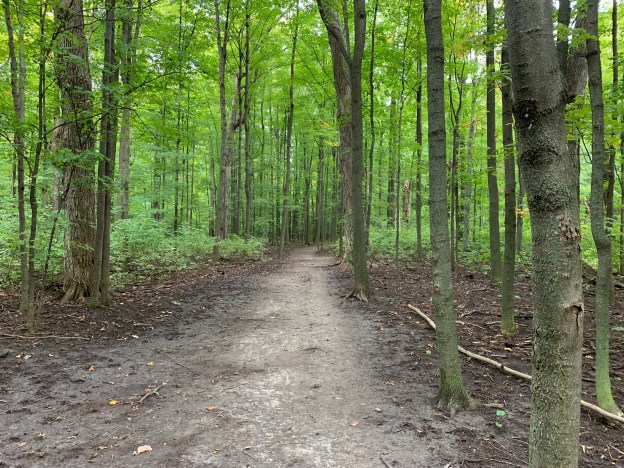Sunday, October 10, 2021
When Jonathon Baker and his wife arrived on their new property in Vaughan in 1816 the land was covered with huge pine trees interspersed with smaller maple trees. They cut the pine trees for wood to build their home and barns and left the maple trees to mature in their place. From the beginning, they started tapping a few trees for maple sugar and maple syrup. These were the only sources of sugar that were readily available. They cleared half of their two hundred acre allotment and left 80 acres on the east end of the property and another 20 on the west end. In the year 2000, the City of Vaughan bought the eastern wood lot to preserve it because it was one of the largest remaining in the quickly expanding city. It was opened in 2011 and is now protected by heritage designations. There’s parking for several cars in a free parking lot at the park.
The two wood lots remain with the east one on Bathurst having been turned into the Sugarbush Heritage Park. The one at Dufferin and Langstaff is largely untouched except for flood control ponds that have been created on the edge of the forest. The 1877 county atlas below shows the Baker farm outlined in green. This farm had been in the family since 1816 when Jonathon Baker Sr. purchased it. By this time it was being operated by Jonathon Baker Jr.
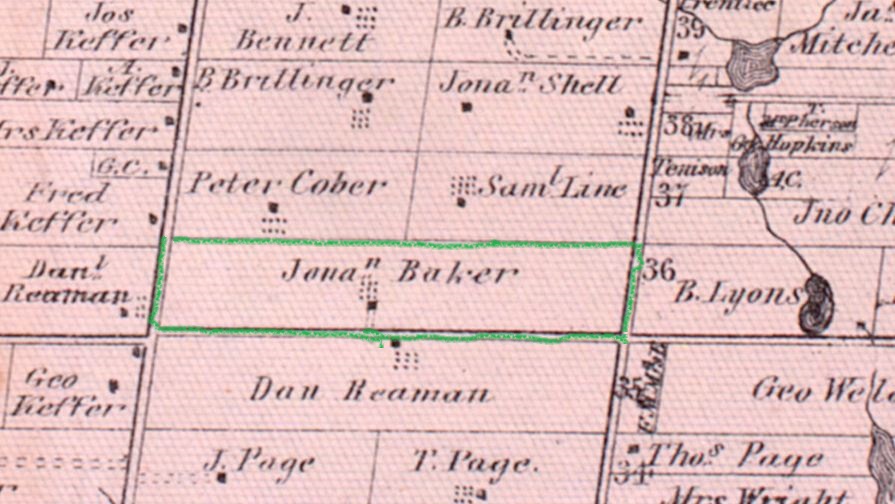
After starting with a tapping a few trees for personal use, the wood lot was slowly turned into a profit centre. They continually added more trees to the collection process, going from 70 in 1870 to over 8000 by the year 1980.
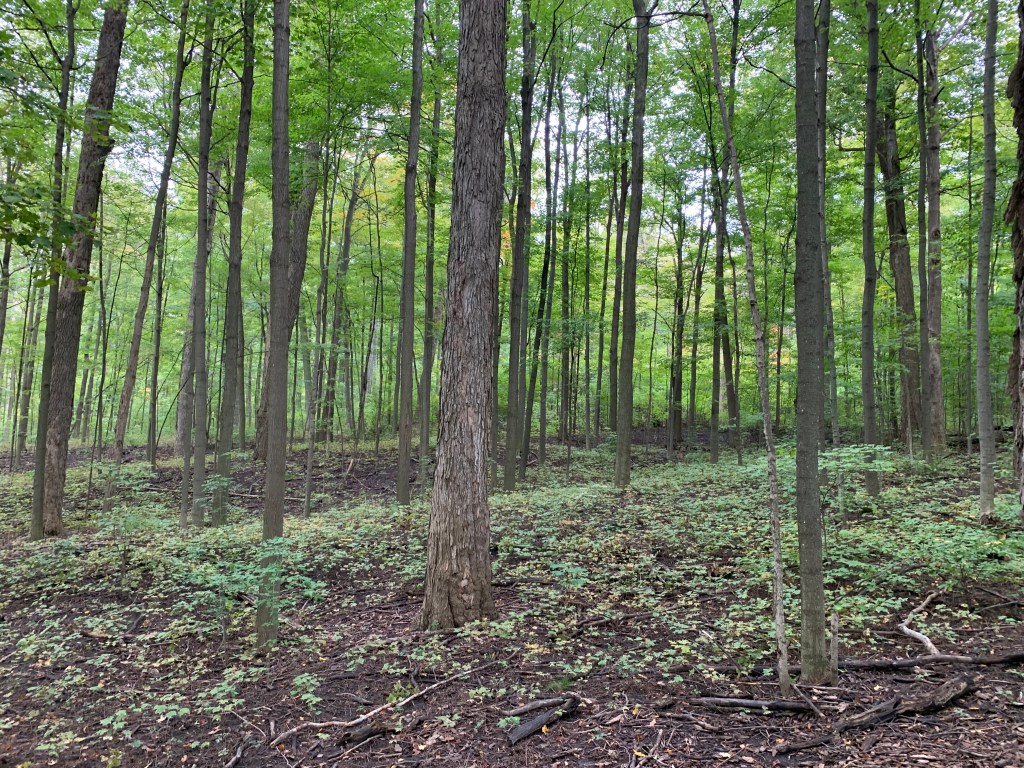
The aerial photo below is from the 1975 survey and was taken from the Toronto Archives. It shows the Baker Sugar Bush outlined in green while the rest of the property is outlined in blue. The woodlot on the west end of the property was also used as a sugar bush and remains undeveloped until this time. It has been marked with an orange line. The Baker house is seen in its original position but it has since been moved near the entrance of the wood lot. In the upper left the Cober cemetery is circled in green and is the final resting place for many of the Baker family.
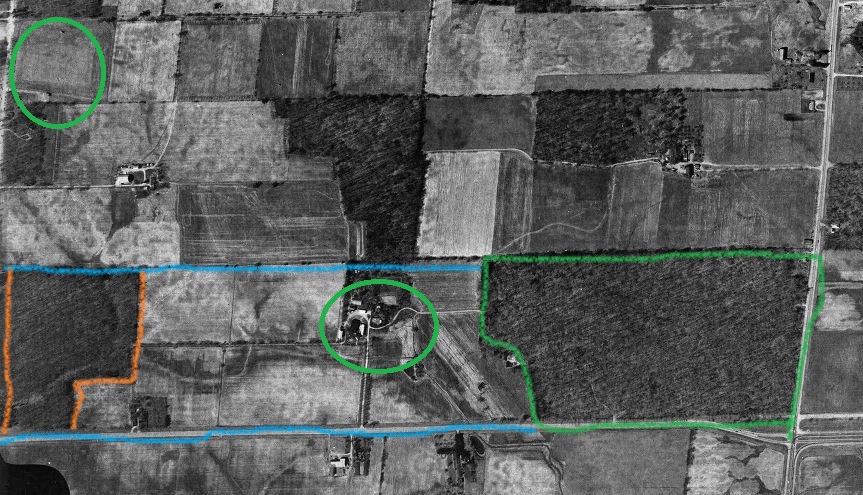
Before the sap started running the family had to go through the woodlot and blaze the trees. This involved inspecting each tree and selecting a new location for that years spiles. A small area of the outer bark was removed with a hatchet to make a smooth spot to bore the holes. This was important after the metal spiles were introduced because it allowed the spile to fit tightly and let the bucket hang straight. A brace and bit was used to bore the holes for 150 years until a tree tapper was bought in 1956. As you walk the trails you can step up to any one of the big old maple trees and look for the old bore holes. There’s lots of them between 5 and 6 feet off the ground. Some trees have dozens of visible holes because they were tapped for decades. It is reported that some of the trees from 1816 were still being tapped in the 1980s.
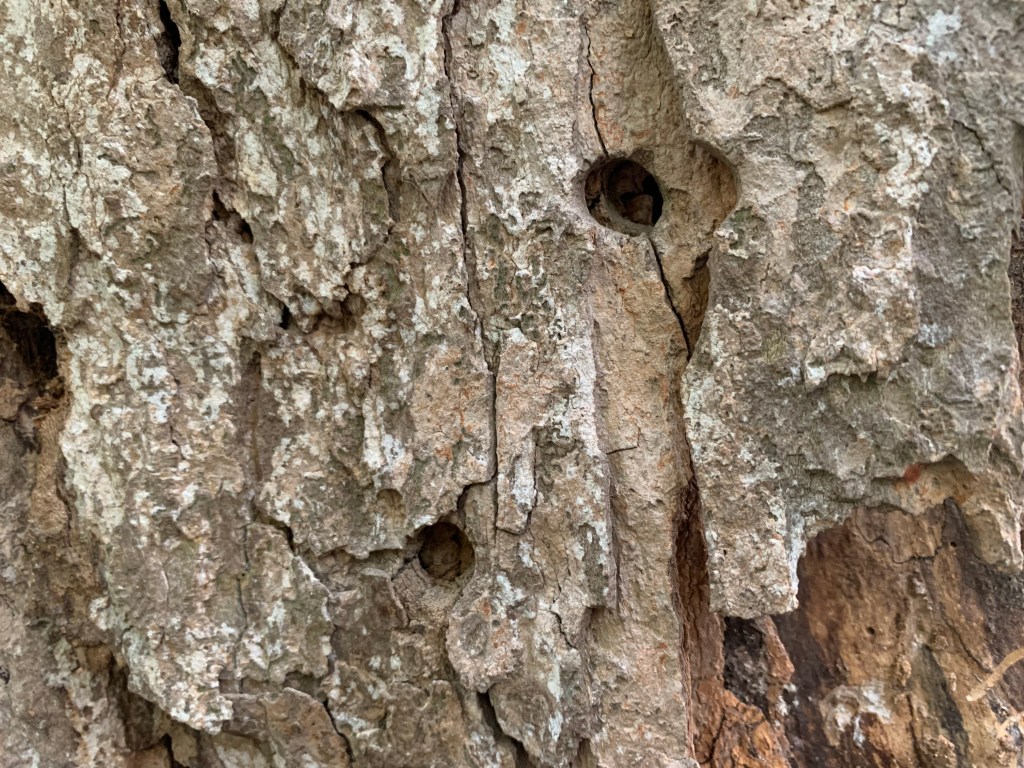
In the early days a 12″ long wooden spile was used to tap the trees. The wooden sap buckets sat on small benches near the base of each tree and the spile had to be long enough to reach out past the bottom of the tree which sloped outward. By around 1900 the spiles were replaced with tin ones that allowed the pail to be hooked on the spile. Then, around 1959 the spiles started to be replaced again with smaller plastic ones that worked with tubing instead of buckets. A careful eye might still identify a spile or two laying on the forest floor.
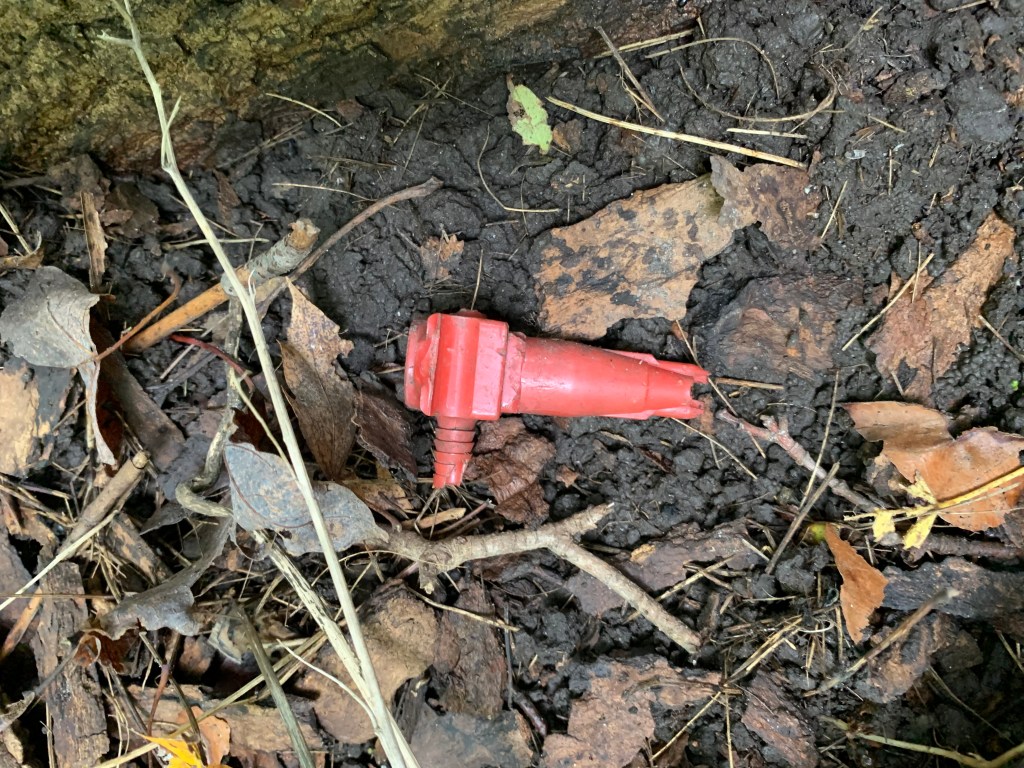
In 1959 forty trees were tapped using a new method of collecting the sap and transporting it using tubing that ran between the trees. Eventually this process would expand until almost every tree was connected with tubing. A few trees were still collected using the old tin buckets so that roadways could be left open to allow the tractor to pass through. There is still some tubing left lying around the forest floor in a few places.
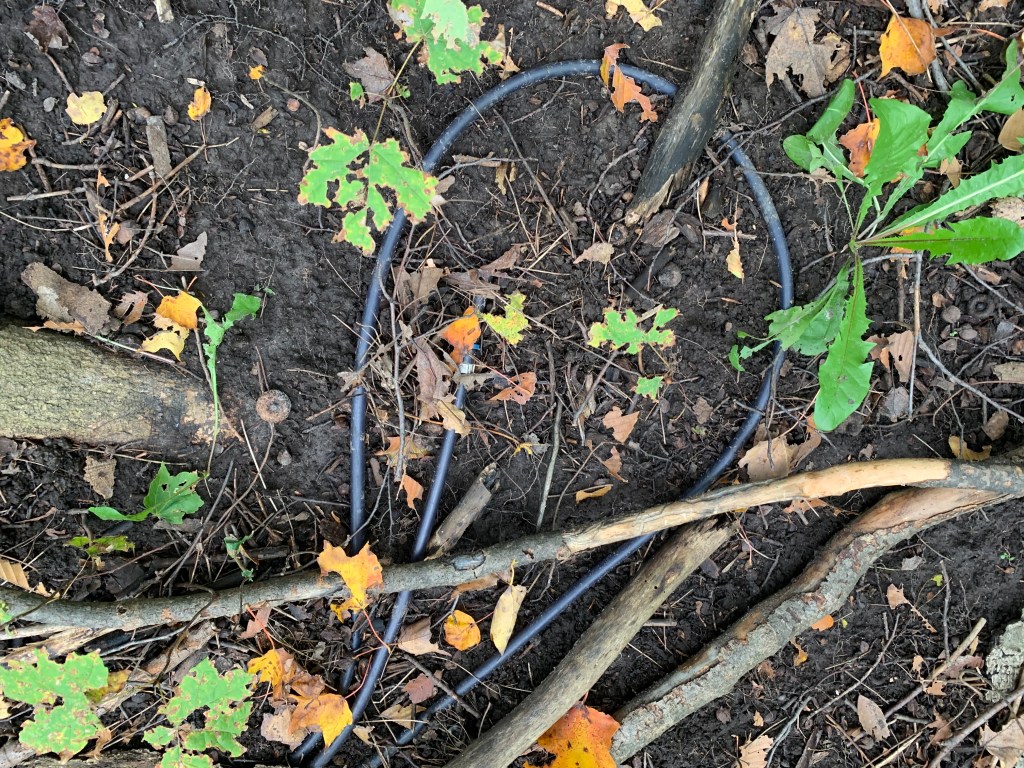
Children will enjoy the Story Walk that has been set up along the trails. There are seventeen panels that tell the story of a panda and a parrot and what they learn about friendship and the joy of the world around them. Although there are 2.4 kilometers of trails in the park the Story Walk is set up on a shorter loop so the little ones don’t have to complete the entire thing.
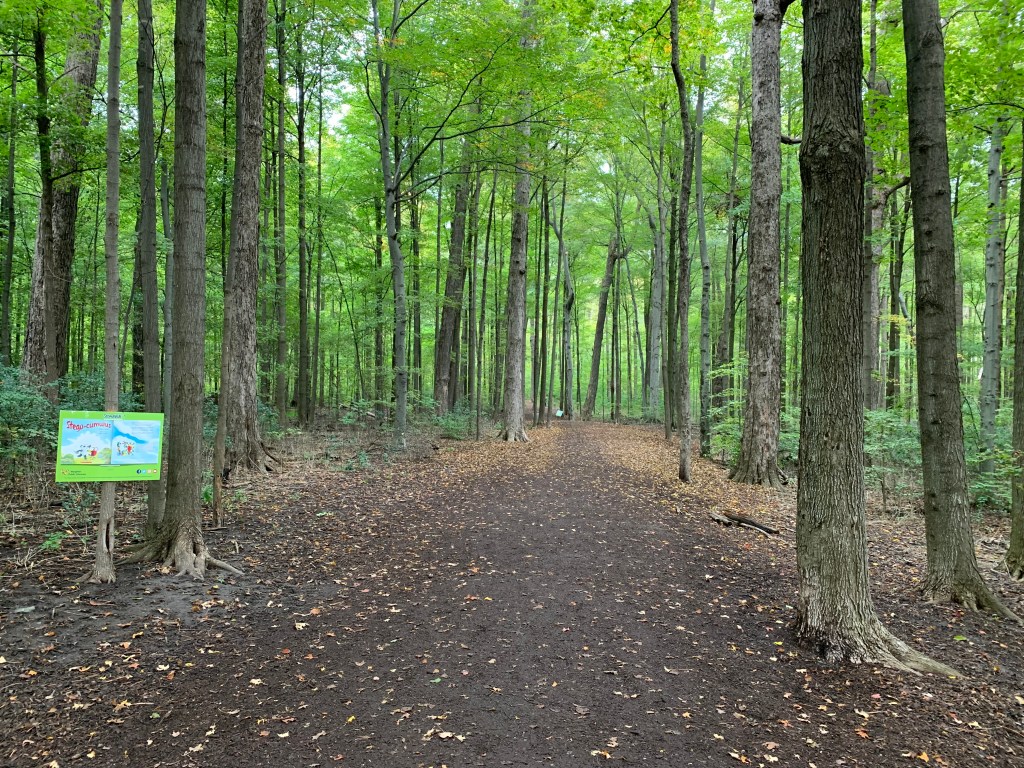
A healthy forest will have several different types of fungi which serve to break down the wood of dead trees. One of the less common ones is Wolf’s-Milk Slime Mold which grows on large dead logs between June and November. When they’re young, if the tiny balls are popped a pinkish orange slime oozes out. Because this is about the consistency of toothpaste, this slime is also known as Toothpaste Slime. As they age the interior will harden and become ochre in colour. Wolf’s-Milk Slime Mold fruiting bodies are only a few millimeters across at the biggest and sometimes there could be only a single one which makes spotting them tricky. Several of the old maple logs lying on the forest floor are covered with this mold so it is a good place to look for it if you haven’t seen it before.

Turkey Tail Mushroom is also known as Tramentes Versicolor because of its multi-coloured appearance. It has been used for centuries in traditional medicines to relieve respiratory ailments. More recent studies show that it can improve the efficiency of chemotherapy in patients with colon or breast cancer.
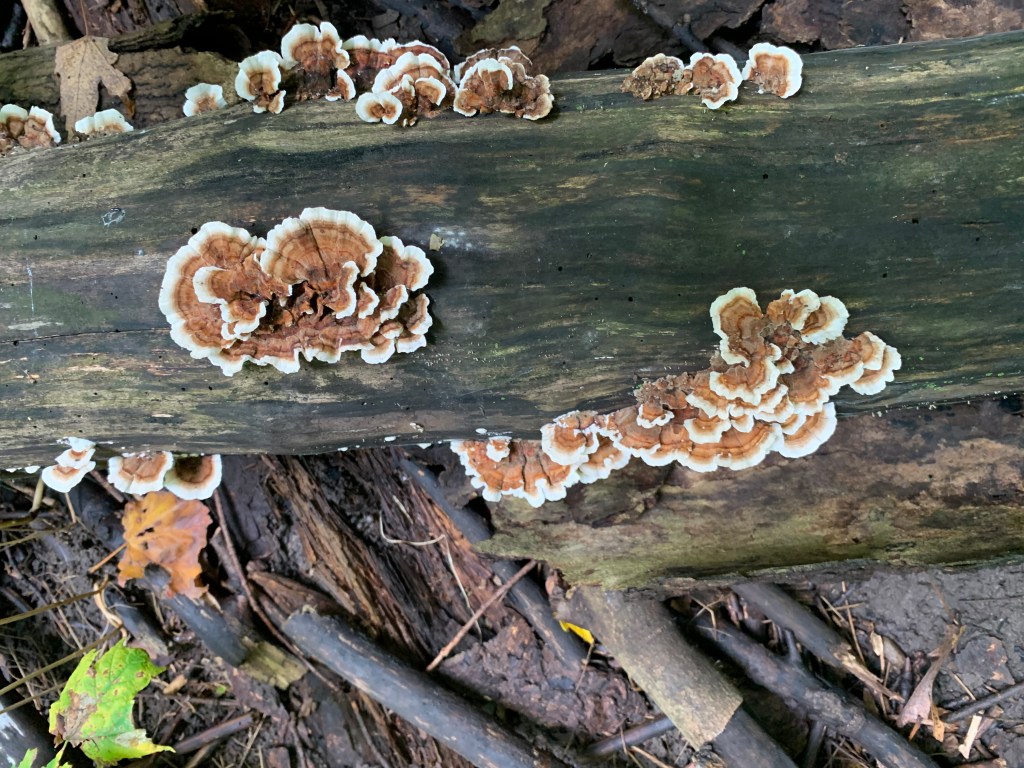
The City of Vaughan operates several types of gardens where residents can grow their own fruits and vegetables. Allotment Gardens are ones in which people can rent a small plot on a yearly basis. There is only one in the city and it is located at Sugarbush Heritage Park where there are 20 plots available and a waiting list to get one.
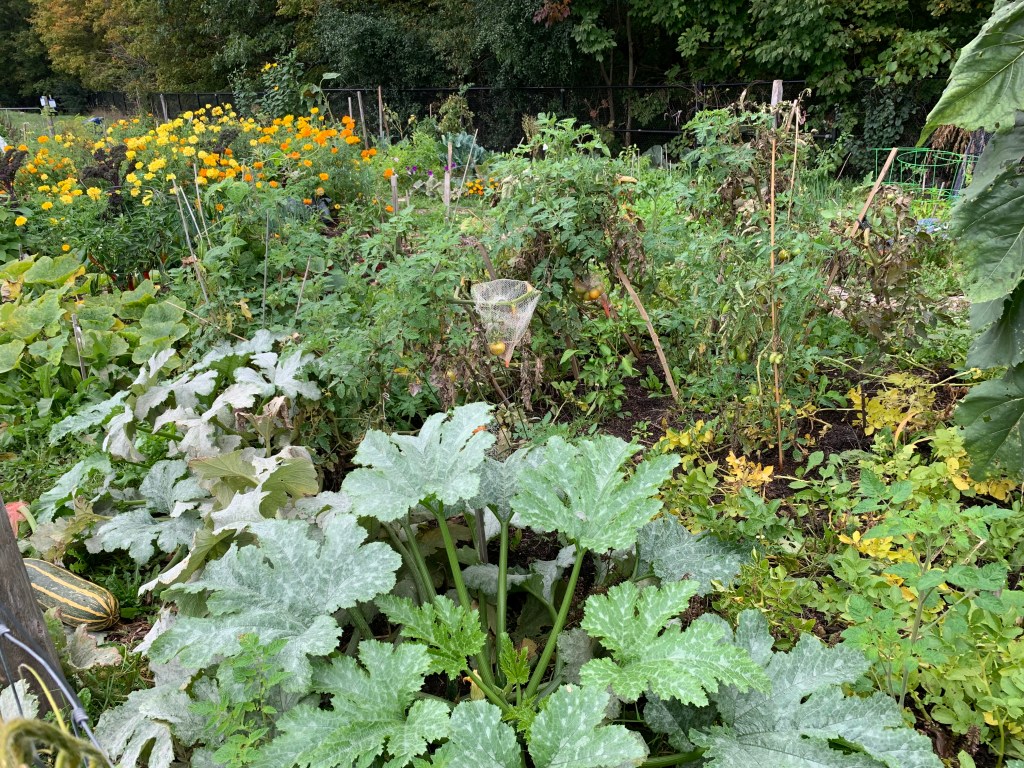
The second house on the property replaced the original log home around 1863. As seen in the aerial photo above, it formerly stood central to the property with access from Langstaff Road. It was moved near the edge of the sugarbush so that it could be used for community purposes.

The other house on the property also belonged to the Baker family and was moved from its original location on Bathurst Street. It was repaired after years of vandalism and turned into the park washrooms.
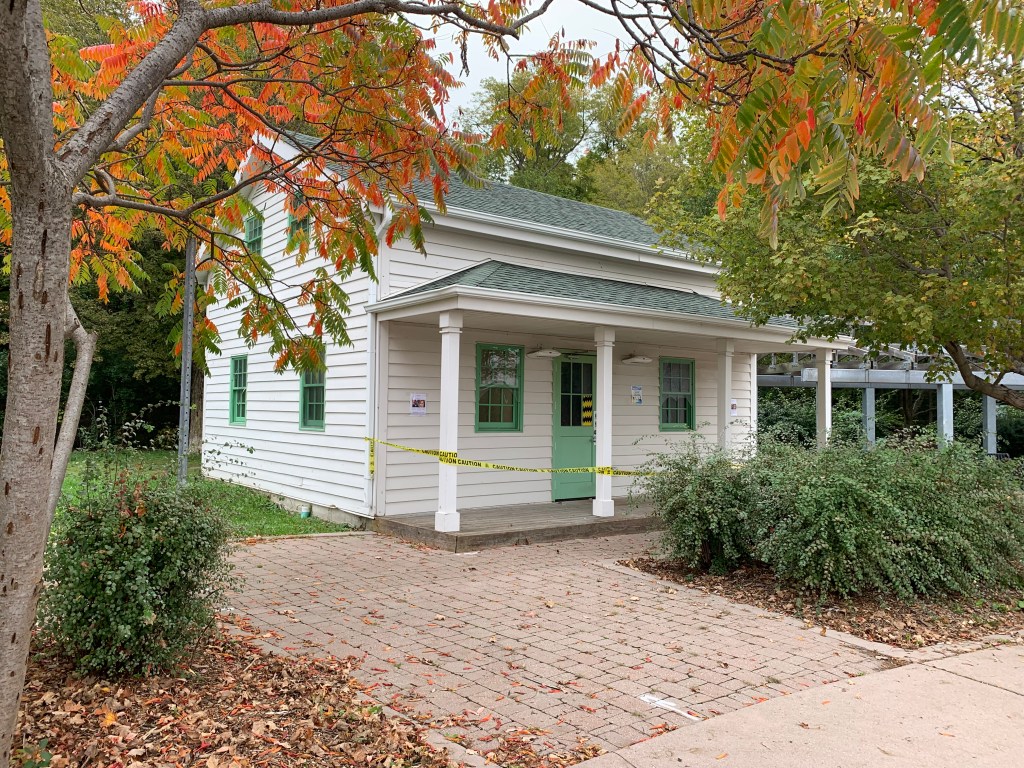
In 1839 Peter Cober donated a small parcel of land on his property at Lot 12, Concession 2 in Vaughan Township for a cemetery. Today it is known as the Baker-Cober Cemetery because the land was donated by the brothers-in-law Peter Cober and Michael Baker.
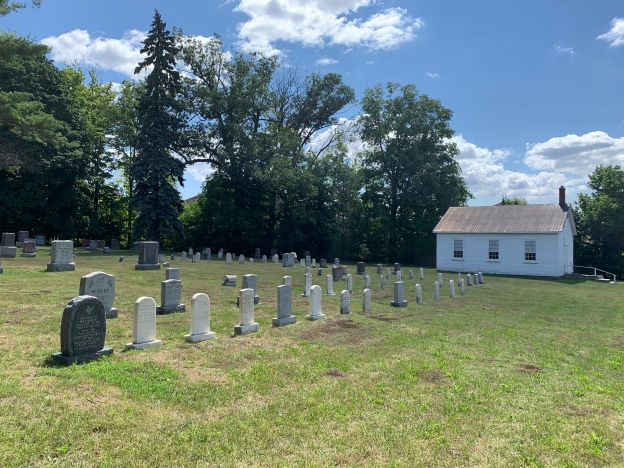
I’m looking forward to returning here in a couple weeks time to see the forest with its fall colours on full display but it makes a great place to go for a walk at any time of the year.
Google Maps Link: Sugarbush Heritage Park
Like us at http://www.facebook.com/hikingthegta
Follow us at http://www.hikingthegta.com
Also look for us on Instagram
